Special Event: Musician Appreciation Concert
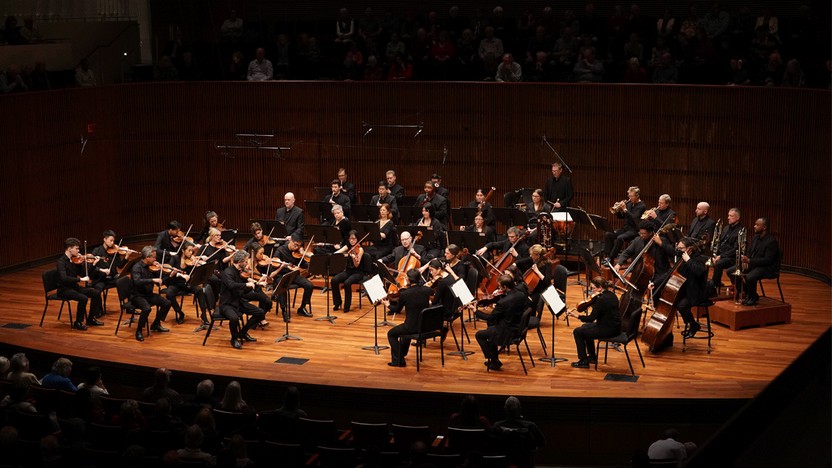
Sponsored By

Sponsored By


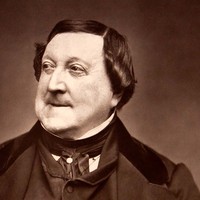
The 21-year-old Gioachino Rossini already had ten operas under his belt when he composed L’Italiana in Algeri (The Italian Girl in Algiers), and it took him only 18 days to craft the recycled libretto into a two-act dramma giocoso. It was this comic opera, along with the more serious work Tancredi, composed a few months earlier, that elevated Rossini from a successful working musician in Venice to an international opera star.
The premise of L’Italiana in Algeri is that the sultan Mustafà, bored with the submissive wives in his harem, decides he must find a strong-willed Italian girl. He lucks out when a shipwreck delivers the beautiful Isabella to his shore, but in the end she proves to be more than he can handle. In the overture (or sinfonia in Italian parlance), the music follows the same sonata-allegro structure that Joseph Haydn perfected in his symphonies, including the optional slow introduction that was a Haydn staple. And clearly the young Rossini learned plenty about musical humor from jolly “Papa” Haydn, as heard in the shocking outburst that interrupts the introduction’s idyllic plucking. There is barely a trace of the opera’s North African setting in the overture (maybe just a whiff of exoticism in the woodwind solos and the spirited percussion), but audiences at this type of comic opera weren’t expecting verisimilitude; they were there to get swept up in Rossini’s wild crescendos, unforgettable tunes and infectious joy.
Aaron Grad ©2025
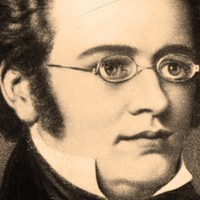
While working full-time as a teaching assistant, taking compositions lessons twice a week, and playing viola in a student orchestra, the 17-year-old Franz Schubert managed to write new music at an astonishing rate that averaged at least 65 measures of music every single day. His efforts that year included his Symphony No. 2, which, at most, might have received a reading from a student orchestra. Not a note of his music had reached the public yet, and during his entire short life he never managed to secure a single performance of any symphony.
As a student composer in Vienna, Schubert could not help but be engulfed by the towering achievements of Joseph Haydn, Wolfgang Amadeus Mozart and Ludwig van Beethoven (who had by then debuted eight of his nine symphonies). Like Beethoven before him, Schubert used the instrumentation and general outline of Haydn’s final London symphonies as a point of entry. In Schubert’s Symphony No. 2, the instrumentation and slow introduction follow Haydn’s mold, and it’s a classic Haydn trick to have the main theme of the first movement arrive quietly before being repeated fortissimo by the full orchestra.
The Andante second movement takes the form of a theme and variations, with a simple and song-like theme that adds a playful extra measure in its second half. The climactic fourth variation moves to C-minor, which returns as the surprising key center for the Menuetto. Before the finale launches, four introductory measures bridge the harmonic distance back to the home key of B-flat major. Then, like horses on the hunt, the orchestra gallops off at a Presto tempo, starting quietly and building suspense until the accumulated tension explodes in a forte declamation.
Aaron Grad ©2025
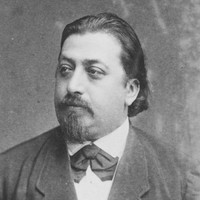
Poland’s Henryk Wieniawski was already an impressive enough violinist at the age of eight that he aced his entrance audition at the Paris Conservatory. By the age of 12, he was astonishing audiences from France to Russia with his recitals (accompanied by his 10-year-old brother on piano), and soon, he was composing his own original violin repertoire, which led to him to return to Paris at 14 for further schooling as a composer.
Wieniawski was at his peak as an itinerant virtuoso when he wrote the Scherzo-tarantelle in 1855, possibly taking inspiration from the Tarantella that his compatriot Frédéric Chopin had published in 1841 (or, more specifically, the popular violin transcription of it by another Polish composer). Wieniawski wrote and published it with piano accompaniment, but markings in his autograph score show that he was also thinking about orchestrating it, and this flashy, hot-blooded music seems especially well-suited to grand, extroverted settings, like this arrangement for solo viola with string orchestra. The main rhythmic pattern comes from the Italian tarantella, a fevered folk dance that, according to legend, allowed a dancer to ward off the deadly effects of a tarantula bite.
Aaron Grad ©2025
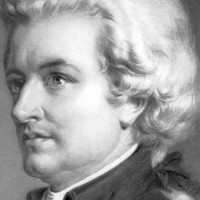 Listen to Audio
Listen to Audio
After a dazzling childhood spent touring the great cities of Europe as a prodigy, Wolfgang Amadeus Mozart ended up spending his early adulthood stuck in his hometown of Salzburg, working a stifling church job alongside his overbearing father and hustling for side gigs entertaining the town’s upper crust. His luck finally turned at the age of 24, when prospects he had cultivated years earlier led to an invitation to compose an opera for the royal court in Munich. With one foot already out the door, Mozart wrote his last symphony in Salzburg at the end of August and led its first performance there a few days later.
This Symphony in C Major — Mozart’s 34th out of a lifetime total of 41 — shows how comfortable the young composer was personalizing a style he modeled after the seminal symphonies of Joseph Haydn (whose brother happened to work in Salzburg too). Symphonies were born out of the Italian opera overture, or sinfonia as it’s called in Italian, and the consummate showman Mozart leans into that overture style in the fast first movement that skips the usual repeat and instead amps up the drama in the exploratory development section and extended coda.
One curiosity about this symphony is that Mozart started writing a minuet after the first movement, which we know from 14 crossed-out measures that appear on the back of the page where the first movement ends. He may have even written the whole movement, since the next two pages of the manuscript are ripped out, but he decided to make this a three-movement symphony — still a common form at the time — and so it instead proceeds to the tuneful style of Andante that was a signature of Mozart’s slow movements. This one strolls at a slightly faster tempo than others, based on an adjustment to the tempo he added later. The scampering finale shows off Mozart’s expansive sense of orchestral color, with woodwinds that take on more independent roles (especially the oboes) and layers of contrapuntal activity spreading the action among different instrument groups and pitches ranges.
Aaron Grad ©2025
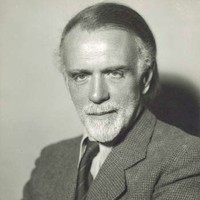
The son of a railway stationmaster, Zoltán Kodály grew up in the countryside of what is now Slovakia, and his music always remained grounded in the folksongs and traditions of the Magyar (Hungarian) people who had occupied those lands for more than a thousand years. Kodály’s friend and collaborator in the systematic collection of folksongs, Béla Bartók, once wrote, “If I were to name the composer whose works are the most perfect embodiment of the Hungarian spirit, I would answer, Kodály. His work proves his faith in the Hungarian spirit. The obvious explanation is that all Kodály’s composing activity is rooted only in Hungarian soil, but the deep inner reason is his unshakable faith and trust in the constructive power and future of his people.”
Amidst the turmoil of World War I, Kodály composed this rondo based on authentic soldier’s tunes. As with many Hungarian folksongs, the sweet tune that serves as the rondo’s principal theme does not resolve to the stable point of arrival that a Western ear might expect. The episodic structure provides ample opportunities for wild mood swings, another hallmark of Hungarian folk music.
Aaron Grad ©2025
This special concert is a fundraising event and is not eligible for ticket exchanges or guest pass redemption. Additional restrictions may apply.
Can't attend, but still want to support the musicians of the SPCO? You can make a gift directly. All proceeds from this fundraising event will go to SPCO musicians in appreciation for the passion, dedication and incredible artistry they share every year. Make your gift today.
Event Packages
Ticket packages are also available for purchase. To reserve a Gold or Silver event package, please contact Erin VanBurkleo at 651.292.3275 or evanburkleo@spcomail.org.
Gold – $10,000 (includes 12 premium tickets)
Silver – $5,000 (includes 6 premium tickets)
Note: The tax-deductible portion of each package is the total amount paid minus the fair market value (FMV) of benefits received, including the ticket price ($25 per ticket) and any associated fees. The deductible portion will be indicated on your acknowledgment receipt.
How is the Musician Appreciation Concert different from a regular SPCO concert?
The Musician Appreciation Concert is an annual fundraising event, with proceeds going directly to the musicians of The Saint Paul Chamber Orchestra. Your generous support of this special event will help meet our goal. Proceeds from the event go directly to the musicians of the SPCO in recognition of their dedication to sharing a world-class orchestra with our whole community.
I’m a Concert Member. Why should I make a gift with my ticket?
The SPCO Concert Membership program is designed to make SPCO concerts accessible by charging a low monthly fee for unlimited concert attendance. This monthly fee does not cover the cost of a regular season ticket and is not considered a donation. Your gift to the Musician Appreciation Concert will support the musicians of the SPCO in recognition of the artistry they share with our community all season long.
What portion of my ticket purchase is tax deductible?
The fair market value of each ticket is $25; that means the remaining amount of the purchase price for each ticket to this special event, minus any fees, is a donation to the musicians of the SPCO. Example: An SPCO fan purchases a premium ticket for $1,000. $975 of the purchase price is a tax-deductible donation; the remaining $25 is the cost of admission. Please note that it is our policy that donations made to this event are non-refundable.
What happens to my ticket(s) if I can no longer attend?
Please contact the Ticket Office to turn back your tickets as a tax-deductible donation to the musicians of the SPCO or request a refund. This concert is a special fundraising event, so tickets cannot be exchanged from this event into another performance. The Ticket Office can be reached by phone Monday through Friday 12pm–5pm at 651.291.1144 or by email at tickets@spcomail.org.
Get driving directions and find nearby parking.
Find dining options close to the venue.
View seating charts to find out where you'll be seating.
SPCO concerts are made possible by audience contributions.
For exclusive discounts, behind-the-scenes info, and more:
Sign up for our email club!
